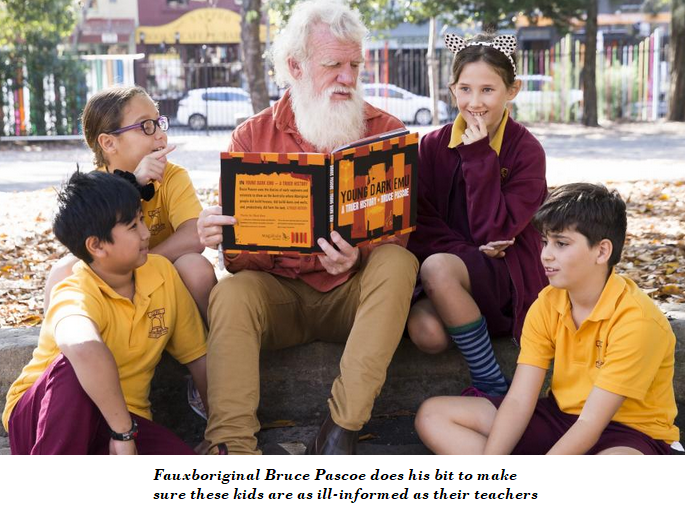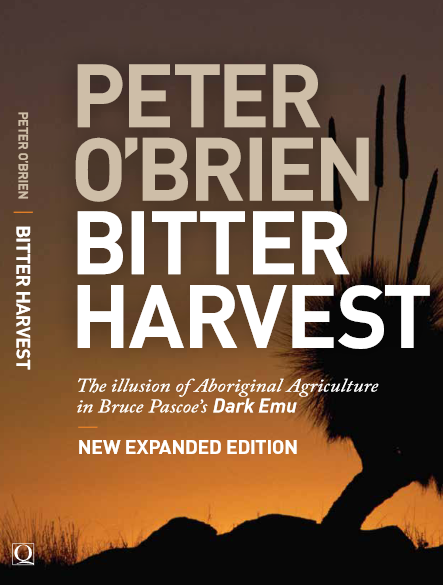
A Minister in Need of Remedial Education

To: The Hon Sarah Mitchell MLC,
Minister for Education and Early Childhood Learning
Dear Minister Mitchell,
I have received a copy of a response that you provided to a question by the Hon Mark Latham MLC concerning the use as a history resource in NSW schools of the book Dark Emu by Bruce Pascoe. In your response you state:
Dark Emu advances an argument by Professor Bruce Pascoe for reconsidering the hunter-gatherer description for pre-colonial Aboriginal Australians. Professor Pascoe’s bibliography cites a range of primary and secondary source material to support his claims, including a number of colonial diaries.
Dark Emu is not a mandated text. If used, it is treated as a secondary historical source and is taught through a critical lens. History teachers provide opportunities for students to interrogate claims as part of the discipline of history.
The fact that Dark Emu is not mandated is neither here nor there. Dark Emu, as I have demonstrated in my book Bitter Harvest – a copy of which I have included, is largely a work of fiction and should not be allowed anywhere near the history syllabus. It is true that Mr Pascoe cites a range of sources but his use of them is deliberately deceptive. In fact, his bibliography lists 295 titles, suggesting a work of great authority. But Mr Pascoe makes use of only a third of those titles in his explanatory notes. The remainder appear to be included in the bibliography merely for show. That, alone, gives you some idea of the seriousness with which Mr Pascoe approaches his ‘research’.
 But to return to the Pascoe argument itself, let me assure you that it is overwhelmingly ‘smoke and mirrors’. Pascoe routinely and deliberately misrepresents his sources. In one example, detailed in pages 17-20 of Bitter Harvest, Pascoe claims that, on one occasion, Thomas Mitchell counted the houses in a ‘village’ and estimated a population of 1,000. That is simply not true. That detail does not appear in Mitchell’s journal. This claim is a pure and deliberate fabrication on Pascoe’s part. Pascoe further claims that both Sturt and Mitchell, on a number of occasions, noticed villages of 1,000 or more people. That, also, is untrue, as I show in the Appendix to my book, which lists every occasion in which Sturt and Mitchell encountered ‘villages’ of more than six or so huts. There is not one instance of a village of anywhere near 1,000 people in any of both explorer’s journals.
But to return to the Pascoe argument itself, let me assure you that it is overwhelmingly ‘smoke and mirrors’. Pascoe routinely and deliberately misrepresents his sources. In one example, detailed in pages 17-20 of Bitter Harvest, Pascoe claims that, on one occasion, Thomas Mitchell counted the houses in a ‘village’ and estimated a population of 1,000. That is simply not true. That detail does not appear in Mitchell’s journal. This claim is a pure and deliberate fabrication on Pascoe’s part. Pascoe further claims that both Sturt and Mitchell, on a number of occasions, noticed villages of 1,000 or more people. That, also, is untrue, as I show in the Appendix to my book, which lists every occasion in which Sturt and Mitchell encountered ‘villages’ of more than six or so huts. There is not one instance of a village of anywhere near 1,000 people in any of both explorer’s journals.
Another egregious example of the deceptive technique used by Pascoe is covered in pages 23 to 25 of Bitter Harvest. In this instance he conflates two quite separate incidents to create a false impression of a vast multitude of people harvesting a cultivated field.
Another of Pascoe’s trademarks is to greatly exaggerate the extent of Aboriginal engineering accomplishment.
He claims that the Aborigines ‘built a vast fish trap near Bermagui’ and that it ‘comprised massive boulders, which were moved into position using long poles lashed to the stones – the natural buoyancy provided by the full tide helped move the boulders to create walls.’ This improbable story is attributed to Max Harrison, although he is not quoted directly. I have shown in pages 91-94 of Bitter Harvest that this story is almost certainly a fabrication.
One final example. Pascoe describes one native dam as ‘an extraordinary construction’ comprising a ‘clay and granite wall 1.8 metres high … and the catchment was so good that even the slightest shower would result in a substantial collection of clean water’. The discovery and description of this dam in WA is attributed to SG Hubbe. What Pascoe fails to include in his description is that Hubbe also observed that the dam was only 1.5m long and 1.5m wide, giving it a volume of about 4,000 litres, about the same as an average back yard water tank. Also, Hubbe did not talk about a ‘substantial quantity of fresh water’ but merely that ‘the slightest shower would add to its contents’. This is not, by any measure, an ‘extraordinary construction’. This example of Pascoe’s deception is covered in page 67 of my book.
I hope you will forgive me for going into so much detail, but I feel it is necessary in order to dispel the misconception that Pascoe is, at worst, misguided in his interpretation of his source material. My contention is that he routinely misrepresents it. When Mark Latham describes Dark Emu as a ‘work of fiction’ that is not hyperbole. It is a fact.
There are many examples of this type of misrepresentation but more importantly is the direct evidence that Pascoe provides in support of his contention that Aborigines were essentially sedentary agriculturalists rather than nomadic hunter/gatherers. That evidence is scarce to non-existent. Within Dark Emu:
There are no eye-witness accounts of Aborigines actually tilling soil.
There are just three accounts of sowing of seed, all small-scale broadcast by hand and all within the twentieth century.
There is no evidence presented of Aborigines irrigating crops – merely some suggestion that, on occasions, they did.
There is not one instance of an Aboriginal tribe permanently occupying a village adjacent, or in close proximity, to a cultivated field.
There is no evidence of domestication of animals, except dingoes, probably used for hunting.
You say that ‘History teachers provide opportunities for students to interrogate claims as part of the discipline of history.’ I would like to believe that is true of Dark Emu but given the extraordinary lengths to which Pascoe’s apologists have gone to protect him, I am not confident. Pascoe has also been authoritatively challenged on the Dark Emu Exposed website but, as far as I am aware, at the moment there is only one serious text which challenges Dark Emu and that is my book Bitter Harvest. I ask that you read it, or at least those sections I have outlined above.
A full reading would, I hope, convince you that Dark Emu is a serious fraud perpetrated upon the Australian public and, more reprehensibly, upon the education sector. However, if you judge Dark Emu as suitable to remain as a recommended text in the history curriculum, then might I suggest that Bitter Harvest should also be included, in the spirit of history teachers providing opportunities for students to “interrogate” claims as part of the discipline of history.
Yours Sincerely,
Peter O’Brien
You can order the new edition of Peter O’Brien’s Bitter Harvest by clicking here
Madam: Archbishop Fisher (July-August 2024) does not resist the attacks on his church by the political, social or scientific atheists and those who insist on not being told what to do.
Aug 29 2024
6 mins
To claim Aborigines have the world's oldest continuous culture is to misunderstand the meaning of culture, which continuously changes over time and location. For a culture not to change over time would be a reproach and certainly not a cause for celebration, for it would indicate that there had been no capacity to adapt. Clearly this has not been the case
Aug 20 2024
23 mins
A friend and longtime supporter of Quadrant, Clive James sent us a poem in 2010, which we published in our December issue. Like the Taronga Park Aquarium he recalls in its 'mocked-up sandstone cave' it's not to be forgotten
Aug 16 2024
2 mins







